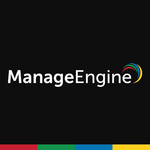What is our primary use case?
Our primary purpose right now is Firewall AlgoSec Analyzer so we can ensure that our rules are nice and tight. We also use the configuration report to make sure that the firewall configuration is nice and tight.
We are starting to use modeling. AlgoSec Firewall Analyzer enables us to input details about what we would like to do to see what firewall changes would be required, if any. Also, if we are having problems with getting an application running across the network, then we can use that to establish what firewall rules might be giving us problems.
As a small branch office focused on wholesale banking, we have a very flat network that we are trying to improve upon. Over the course of last year, everything has been flat and accessible. Now, we are breaking into VLAN segmentation. That is where Firewall Analyzer will really come into good use, because it will help us to limit the traffic to only what is necessary.
We have some cloud. Our core banking is with a different organization, which is in the cloud. We also have a couple of other treasury cloud applications in the cloud. However, a fair amount of our network is within our data center and office. So, we have a hybrid model.
How has it helped my organization?
We are very simple. The benefit of AlgoSec Firewall Analyzer right now is to give us skills that we don't already have with our people. Also, when we get into our periodic reviews, AlgoSec enables us to do it without adding additional staff. Something that we are not able to do because that is controlled in the Chilean head office. So, we need to make the best use of the best tools to secure our environment with a minimal number of people.
AlgoSec reduced the time it takes to implement firewall rules in our organization. Before, our firewall rule review was always done manually. When we installed the appliance and ran the report, we quickly found half a dozen areas where we were more exposed than we needed to be. The manual process used to go on for weeks. The AlgoSec process right now, as we develop and become better with it, takes only a matter of two or three days. We can have a good solid review, then we can get into very specific details about any rule or configuration with the objective of ensuring least privilege. Only the things that are needed to support business activities are allowed.
We are a regulated industry: financial services. We are obliged to at least annually review our firewall rules for risk. Are they too permissive? Are they not needed? Because we have this tool, we can now do that once a quarter. Before, we only did it once a year.
We are a small branch of a much larger organization in Latin America. The rules that were set up allow free flow of information back and forth, i.e., network connections. Right now, with ransomware being what it is, we are starting to review those rules because they are too permissive. Another way that AlgoSec is helping us, internally, is working with our head office to make sure that they are treated with least privilege. Something that is not normal. Something that didn't happen, "Just because."
I have been with this organization for about two years. All the wide-openness of the network communications was just a bad event waiting to happen. AlgoSec Firewall Analyzer has given us the great ability to dig down into the details and work at a level above the skills that we already have, making sure that we are in a process. It started months ago and will continue for seven more months. That network traffic in and out of our perimeter is the least that it should be.
We work with multiple security vendors. For just IT alone, we have three primary vendors and a couple others that pitch in when needed. AlgoSec Firewall Analyzer helps us to make sure that we allow only what they need and that we keep them to the internal assets. They are external third-parties. We have high assurance that they are only able to access network assets that are part of the contract. Another vendor manages our firewall. The reason we have them do it is because we don't have the expertise amongst our people. So, the addition of the AlgoSec Firewall Analyzer enables us to have the intelligence of what is good and what is less than good. Thus, we can help keep that third-party on the rails, that they are doing good things for us, and we have the evidence to prove it.
We are getting into using AlgoSec to implement and manage micro-segmentation initiatives. One of our audit concerns was the flat network, and we started to work based on what we already know to create a test segment. However, AlgoSec is helping us to validate the traffic that will be allowed into that new segment, restricted to only that which we need. No sense in creating an isolated network if bad things can still flow back and forth between test and production. So, AlgoSec is a tool that is helping us make sure that we have all the isolation that we need. But, because of the syslog counters, we can also tell over time whether we did a good job in the first place and whether the remaining rules that we configured to be nice and tight are still needed for business purposes.
What is most valuable?
The most valuable is helping us determine where our rules are too permissive. Based on previous human review of our rules, they are very cursory. We know why we do something, but we don't get into the details of whether the rule is nice and tight. What Firewall Analyzer lets us do is understand the risks presented by our rules. The tool does a calculation of all the traffic that could be allowed and we can match that to whether it should be allowed. Another thing that we have recently started to do, but only about 100 days ago, is collect syslog events from the firewall that now tell us whether the rules that might be well-configured are actually being used by people or traffic. Our next step will be to start eliminating well-formed rules that just aren't needed.
The overall visibility that AlgoSec gives me into our network security policies is perfect. We think about separation of duties. As the information security officer, I shouldn't be logging into the firewall and playing around. What AlgoSec does is give me the ability to see everything about the firewall: its rules, configurations, and usage patterns. It gives me all the visibility that I need to make sure that we are doing what we should do to keep it tight. There is no perimeter anymore. We have to be very careful what we are letting in and out, and Firewall Analyzer helps us to do that.
Another very useful feature of the AlgoSec Firewall Analyzer is it will alert us to changes in firewall rules and configuration. So, we have a third-party who manages our firewall. AlgoSec gives us notification, if they go in and make changes either to the configuration or rules, so we can keep track and make sure that only authorized changes are occurring.
What needs improvement?
We are using AlgoSec directly against our Cisco Firepower. At first, AlgoSec didn't work with Firepower. It didn't know how to read the logs. So, improvement has been made. Now, the feature that was available on the older generation firewall is available on the current one, but this is a problem which has already been dealt with.
For how long have I used the solution?
I became familiar with AlgoSec Firewall Analyzer way back in 2004. I was trying to do some independent consulting, and part of that is a good firewall review. So, I started to look for tools. That is when I had my first discussion with AlgoSec. Since then, I have used it a couple at different organizations, including the one where I work now. It has been quite helpful with making sure that our firewall configuration is all that it should be.
What do I think about the stability of the solution?
It is set and forget. I don't have a lot of Linux or Unix experience, at least not in the last 20 years. So, that has been removed from me. The appliance comes and we connect to the command line. Anything I need to do is menu-driven. So, it is easily maintained by people whose skill set changed from hands-on to management quite awhile ago.
What do I think about the scalability of the solution?
Scalability is not something that I have had to concern myself with right now.
Currently, we have five people who use it to either tune the rules or find out answers to questions about the network and flows.
How are customer service and support?
We have a customer success manager, Matt, who is terrific, very responsive, and always there for us when we need it, providing quick answers. This also applies to the support desk if we raise a ticket. I did have a problem after we installed the A32 version, where I was getting some errors in the email. The engineers got into the code and found some code that needed to be corrected. I don't remember exactly what the problem was, but it took less than two hours to find and correct it. So, the support has been superb.
Which solution did I use previously and why did I switch?
At this bank, it replaced the manual solution, where if you were not a Tier 3 Network Engineer, then you were probably not going to be able to get into the details and nuances of any of the rules and configurations. So, they get glossed over. The firewall review done manually is more of a sanity check. "Do we need the rule at all?" is really the question that gets asked, not whether the rule is done correctly to support privilege and least access.
How was the initial setup?
The setup was quite easy.
if I were to take out the fits and starts that were our responsibility, the installation was less than four hours. Then, the upgrade was done because we went from version A30 to A32. That took about an hour and a half. It was very simple and straightforward. Now, when I need to do regular releases, i.e., patches, I can do them myself. It is menu-driven. It's pretty easy.
What about the implementation team?
AlgoSec's support was there for us. We worked with them. They did all the heavy-lifting. It was easy to schedule as well as very flexible, as we got our act together. Organization is important.
One staff member would have been sufficient for deployment and upgrades, but I made sure that our IT staff population representation was there so they understood the tool, where it was going, and how it would be used. However, it easily could have been done with only one person on our end.
What was our ROI?
In the end, I did a calculation. When I think about the number of people, when we did the manual way, who had to be involved, and how long did it go? Did we risk being out of compliance with regulations? There is a big cost to that. It is cheaper operationally to work with AlgoSec than to try to do this manually.
AlgoSec has absolutely helped to simplify the job of our security engineers. It gives us a level of expertise that we didn't have within our own staff. AlgoSec showed us that what our staff could do wasn't good enough. So, it is a force multiplier. It enables us to have the expertise that we don't have, but it also gives us the cycles, e.g., the actual ability to extract the rules, evaluate them, and then assemble them into a form that we can present to auditors and regulators, if needed. This greatly helps us. As a tool that has so many features, there are certainly more that we can grow into, but the ones that we are using right now have been of a substantial value to us. This is even being commented by our auditors from one review period into another.
The staff enjoy it. There is always that dynamic between security and IT. IT has projects to do and serve the business. Security isn't quite seen in that same light. So, they enjoy it because they don't have to spend the time to go through the rules, trying to reverse-engineer what is going on, and it takes care of a lot of the documentation for them. It keeps them in the zone that they are used to working with the correspondence that belongs to the rule, allowing them to understand the details. This has helped us understand ourselves better, how we operate on the network layer, and saved us the time of actually doing the rules. So, we are much better with our compliance, audits, and regulatory requirements, but we are also better in our security. Two things that an ISO always has to be concerned with - compliance and actual security. This tool acts like another person on staff, increasing our ability to be very fine-tuned on rules. We will be using it for a while to come.
What's my experience with pricing, setup cost, and licensing?
I am a fan of AlgoSec for its pricing. As a small branch, getting any amount of money, is very difficult. Less than a thousand dollars, that will take some effort for two reasons:
- Asking for money.
- It wasn't in the budget.
The price came in where we really didn't even need to have much of a discussion. That was very good. There are also options regarding what you want to pay for. It wasn't really pushed on me that I have to get all of it or else I can't be an AlgoSec customer.
There are training and support levels that come in beyond the product itself, and we did subscribe to the training. We also have the support. The pricing has been very approachable, and that is why we have it here.
Which other solutions did I evaluate?
I have looked at other options along the way, like Skybox. AlgoSec came to the market before the alternatives did. When I become aware of it and something is good, I stick with it. Why change?
I went to the Gartner page and looked at who the competitors were. I looked at customer reviews and things like that. However, because I have had such a good experience with AlgoSec Firewall Analyzer, I continue to use it. I have found no reason to go with any of the other alternatives.
Our local policy is that I have to be able to compare at least three products when I go to management to ask for money. I did exactly that. I took three alternatives and brought them to our management team. I explained the whys and wherefores for why I was promoting AlgoSec. Now, we have it here in our environment.
What other advice do I have?
I would recommend, "Do it," in regards to implementing AlgoSec. I wouldn't have been with it since 2004 if it wasn't among the best tools. I have tools in vulnerability scanning and SIEM/SOC as well as tools for authentication. There are a lot of tools. As a security guy, I have been doing this since 1997. When you find a product that delivers, you stick with it, and AlgoSec is that type of product.
I have been so pleased with the tool. It sounds cliché, but I haven't gotten to a point yet where the tool hasn't provided for me. This is why I always come back to it. For an organization as small as ours, it gives us a tool that is affordable, easy to implement, and the expertise that we were lacking.
When I need it, it is there. If I have a question about an endpoint or protocol, I am trying to resolve audit points about what ports are listening and why, or I have to figure out how to isolate something more than it already is, AlgoSec is the tool that I go to first to get information and answer some of these questions. In most cases, all the details and rules are all right there. It has been great.
I have seen the capability for AlgoSec to enable us to manage multiple or dispersed environments in a single pane of glass. Because I am such a supporter and have seen the value that AlgoSec can bring to more than one organization, I invited the CSO office in Chile to attend a work session with us so they can start to see everything that AlgoSec might do for them. I knew that it was on their task list, and they have a need to get into the same area. The potential is there that our head office will begin to use the tool, having seen how it has been helping us in just our local office. They need it more because they do have a broader array of firewalls, connections, and things like that. So, I'm looking forward to that.
I know for a fact we are not getting all the value out of the appliance that we can. I know for a fact we are getting more value out of the appliance than we intended when we licensed it. Those are good things. The visualization of our network is helping me. There are diagrams that can be drilled into which help me. When you are small, going over to IT all the time and asking questions isn't always the best thing. It is disruptive. Then, I have to worry whether I got the right answer or not. AlgoSec removes those things. I see what is happening and I know that it is based on the facts. There are five of us using it. I am sure that we use it every week, probably not every day to answer questions, and we are running monthly reports, which are automated, so we have a good history. So, we have the opportunity at any point to identify problems and resolve them.
What we have learned from using AlgoSec Firewall Analyzer: We didn't understand our risk with our firewall. It is good that we relied on a credible third-party, but what we saw was rules could be better configured. These are our protection to the outside world between the bad world outside and inside, between our head office and us. I worked for a Wall Street firm, and we didn't trust anybody. It is a big deal now with zero trust. This tool will help us to get there, dialing things down.
For the AlgoSec experience (the company, product, support, and people), I want to give it 10 (out of 10). Nobody trusts that, but they have been very good to me. The boss who didn't like spending money is very happy with the results. I brought it back to him and showed him what we have been able to do past our manual efforts, and it resonates with him. It makes sense to him. He reads the paper. He sees how quickly ransomware can spread across a network. One of the things that we can do to help protect against that is make sure that we have good segmentation and only the endpoints which really need to talk to each other are allowed to do so.
Which deployment model are you using for this solution?
Hybrid Cloud
Disclosure: PeerSpot contacted the reviewer to collect the review and to validate authenticity. The reviewer was referred by the vendor, but the review is not subject to editing or approval by the vendor.















